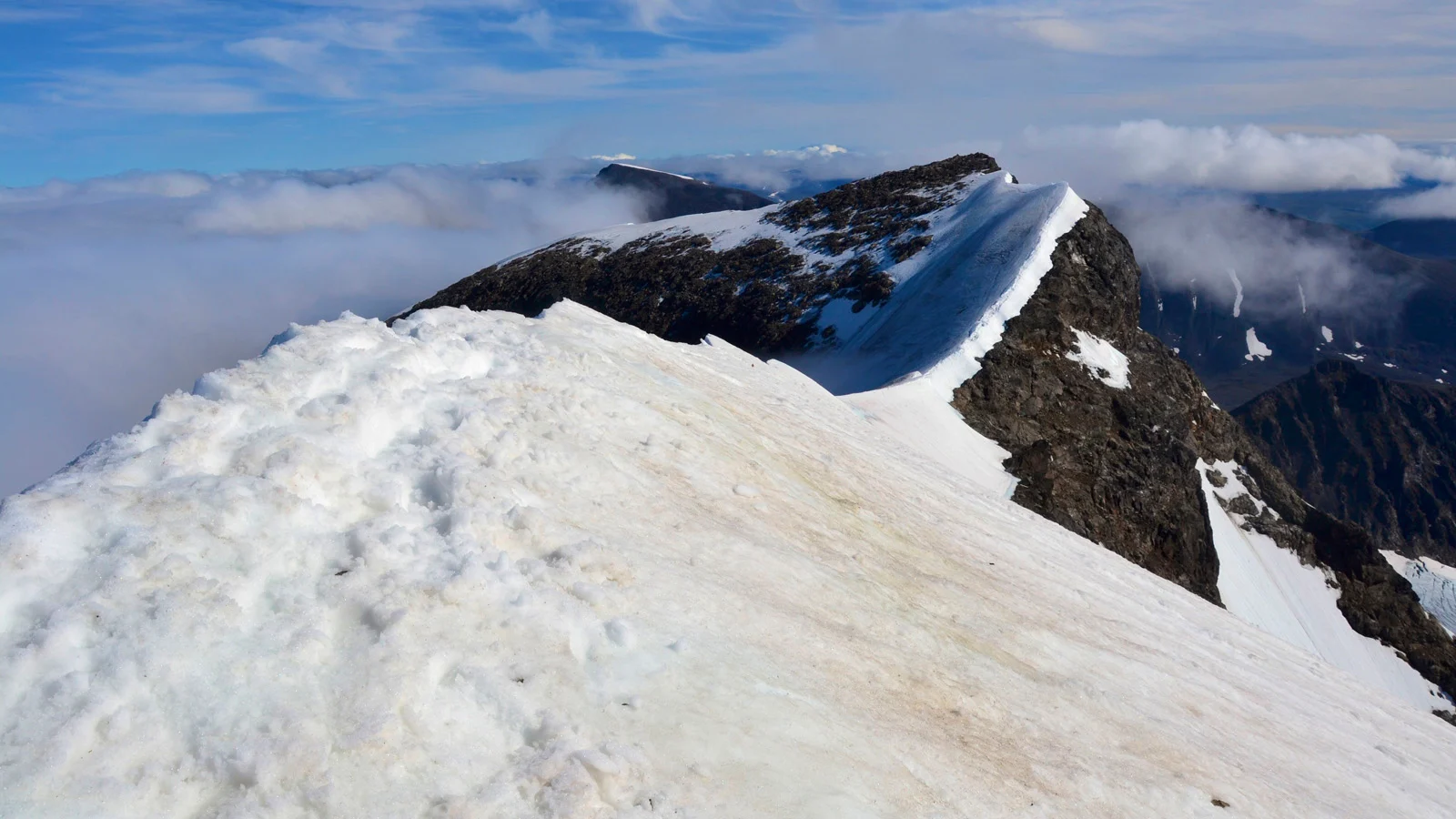
Sweden's 'tallest peak' moves due to soaring Arctic temperatures
A Swedish glacier is melting away as Arctic temperatures climb, taking with it a mountain peak's title of tallest in the country.
The Kebnekaise massif is an icon in its native land of Sweden. This mountain is located in the country's far northern reaches, about 150 km north of the Arctic Circle, and the southern of its twin peaks was recognized as being the tallest mountain peak in the nation.
Until now.
The two peaks of Kebnekaise (pronounced KEB-nee-KEYE-suh) are quite different from one another. The northern peak - normally, the shorter of two - is mostly bare rock. The taller southern peak, on the other hand, is topped by a thick cap of glacial ice that once had its highest point at an altitude of 2,120 metres. That is no longer the case, however.
For the first time since Sweden began measuring the height of this peak, back in 1880, the southern peak is no longer the taller of the two.
Due to ice melting from the top of the glacier, as a result of rising Arctic temperatures, the granite northern peak is now 1.2 metres taller than the icy southern one, at a height of 2,096.8 metres above sea level.

The twin peaks of Kebnekaise, viewed from the Tarfala Valley, in 2014. Credit: Alexandar Vujadinovic/Wikimedia Commons (CC BY-SA 4.0)
According to Gunhild Ninis Rosqvist, a geography professor from Stockholm University who has been taking measurements of the glacier for years, Kebnekaise's southern peak has shrunk by an average of one metre per year for the past two decades. Now, in 2019, the southern peak is at its lowest point on record.
"We suspected this was probably the case last year," Ninis Rosqvist told The Guardian. "But unfortunately our measurements were not precise enough. Now we can say with certainty - we are accurate to within a couple of centimetres."

The summit of Kebnekaise, shot from the icy peak, in 2013. Credit: Dianou42/Wikimedia Commons (CC BY-SA 4.0)
The southern peak is at its lowest point on record now, lower than the northern peak, but this isn't the first time it's gotten to this point. It came very close back in 2014.
"There was only seven centimeters difference [between the northern and southern peaks] and the trend over the last 15 years is that the southern peak decreases by one metre on average every year," Ninis Rosqvist told Sveriges Radio AB back in 2015 (translated from Swedish). "So really it is likely that it will be lower than the northern peak quite soon, but perhaps not this year as this combination of snowy winter and cold summer has benefited the summit."
From 2014 to 2015, Ninis Rosqvist recorded a 4.5 metre increase in the glacier thickness, thus keeping the southern peak from relinquishing its title. Now, in 2019, we are seeing her prediction come true, with the northern peak now taking the title as tallest peak in Sweden.
It is quite likely that the glacier will grow again this winter, temporarily giving the southern peak back its title.
"It will keep changing for a while," Ninis Rosqvist told The Guardian. "But the trend is now firmly established, and very clear."
Sources: The Guardian | Sveriges Radio AB











